Review: Revel Ranger V2
At home on downcountry technical trails and efficient enough to toe a start line
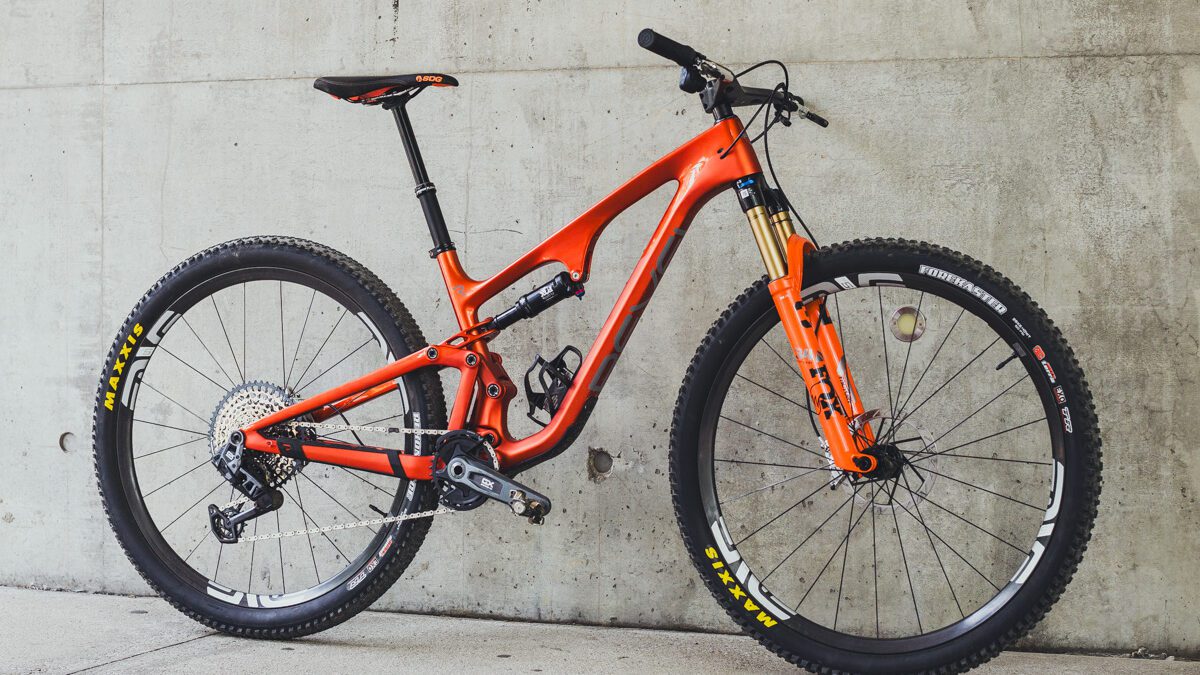 Photo by:
Matt Stetson
Photo by:
Matt Stetson
These days, there is more than one way to approach a cross country race bike. The newest version of the Revel Ranger falls nicely into the down country category, straddling the line between XC and trail. Usually with XC bikes, you get a great climber that descends not badly. In the case of the Ranger, you get a very good climber that is super fun on the descents.
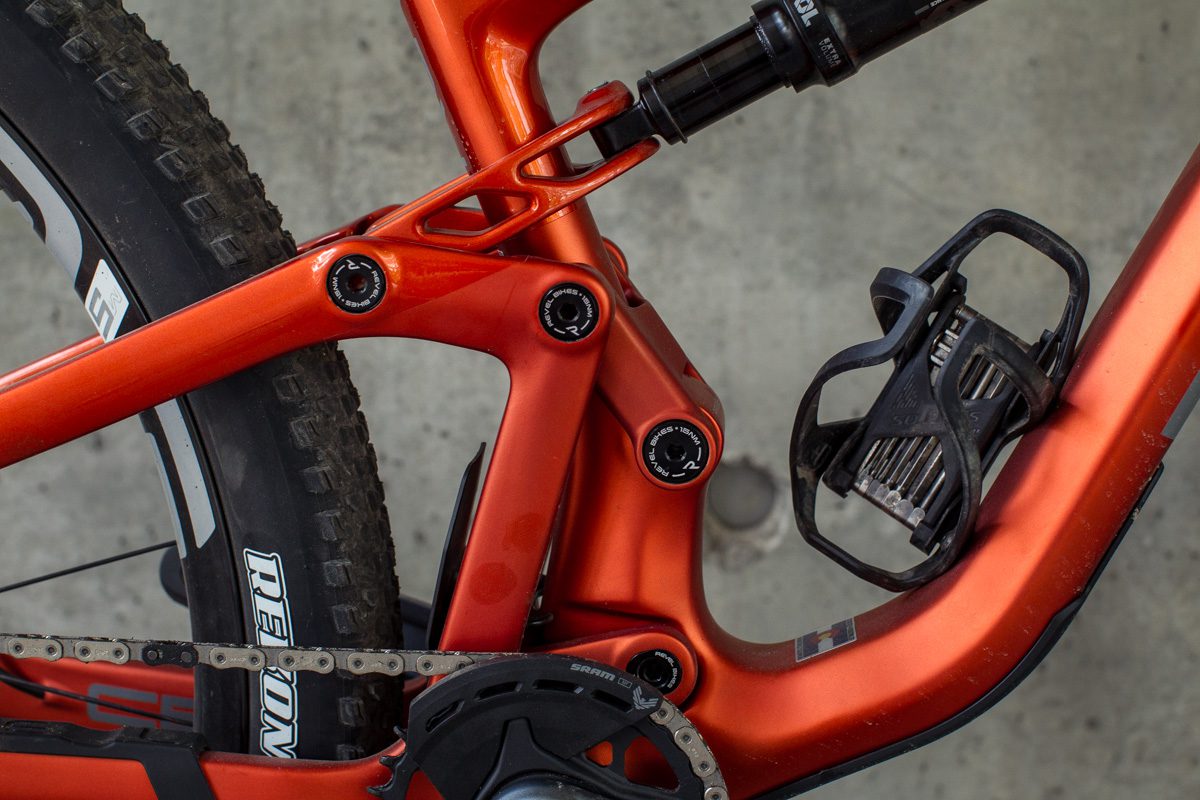
Revel Ranger V2 build: from the ground up
I started with a medium Ranger V2 frame that Revel has updated with SRAM’s UDH. There’s also more lateral stiffness in the rear triangle and greater tire clearance at 2.6″. I built it up with SRAM’s new Transmission GX, Fox’s new Float SL shock at 115mm and Step Cast 34 120mm forks. Wheels were ENVE M5’s with Maxxis new Forkcaster front and Rekon Race rear tires. Dropper post and a carbon fiber bar/stem were from FSA. All in all a great build that added to the very stylish look of the bike.
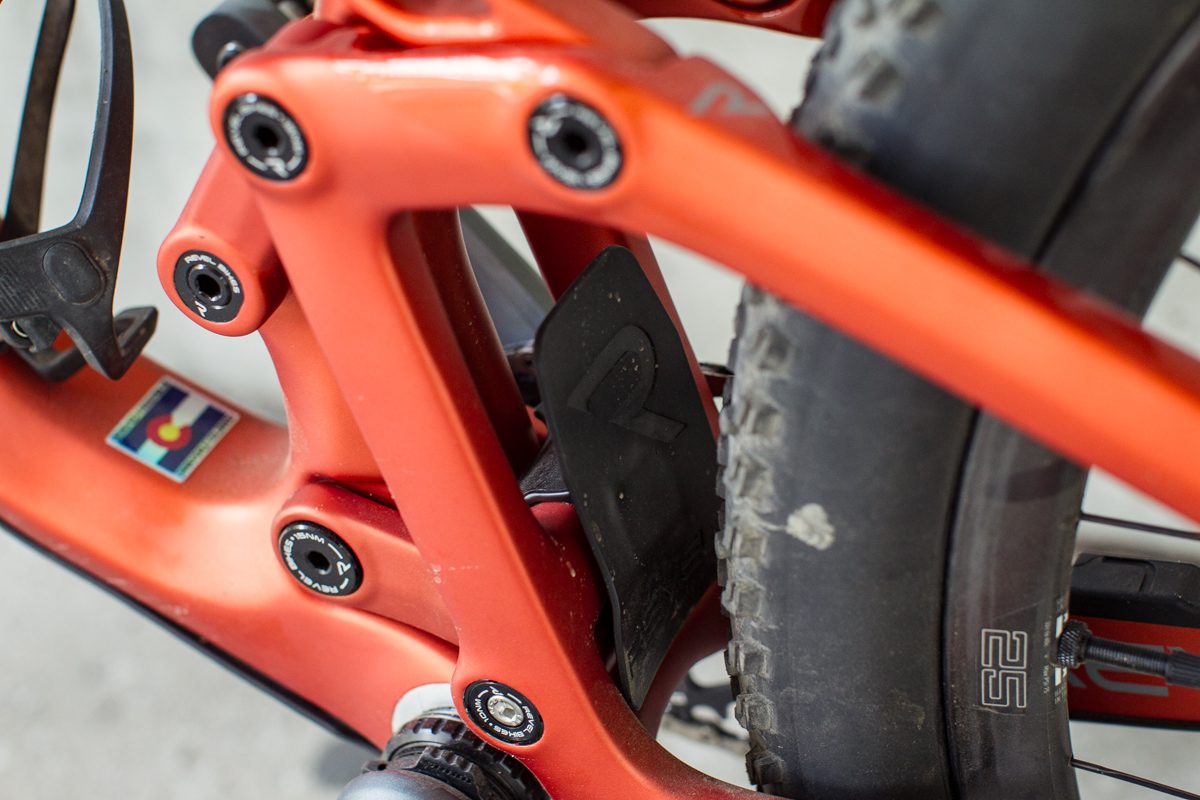
Revel, Canfield and the Ranger
Revel is a reasonably new brand out of Colorado, five years and counting. Back in about 2017, as Revel was getting off the ground it came to a licensing agreement with Canefield Bikes to license its Canfield Balance Formula suspension system or CBF. The primary function of the CBF is that it keeps the pivot point along the chain line at the front of the chain ring. This helps maintain tracking on the rear wheel by reducing the fluctuating distance between crank and rear axle. So when climbing and descending the rider feels less of the bike bucking and bouncing and, when pedaling, the bike’s suspension is less evident.
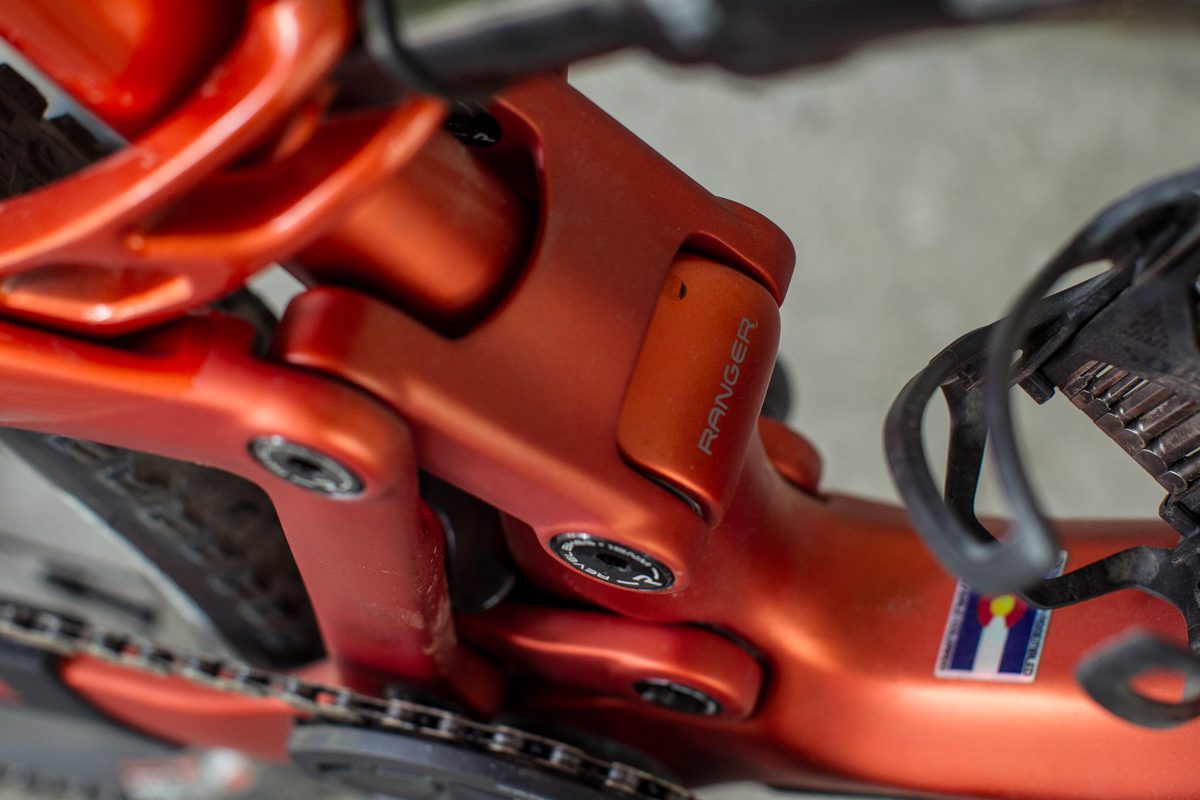
CBF is one of the central features of all Revel’s frames from the beginning as it is a suspension system that can be tuned to work for a variety of types of bike designs. Revel uses it from this down-country rig, which prioritizes pedalling efficiency, all the way up to the Rodeo, the 3-d printed DH bike. My only initial caveat is that the CBF comes with some added complexity. There are five pivot points plus rear shock hardware, so there is a potential for things to get squeaky. But, to date, all has worked beautifully.
The Ranger is a carbon fiber 29er, as you’d expect from a downcountry frame. It comes with two water bottle cage mounts, both on the downtube, and a rear mudguard to keep debris out of linkages. It is designed around reasonably relaxed downcountry geometry rather than an aggressive xc, but nothing too extreme. Highlights include a 67.5-degree headtube angle and 75.3-degree effective seat tube angle and, on the size medium frame, a 453mm reach. At 5’10” I am tall for the medium frame, right at the limit of what Revel recommends. But, as I’m using the bike for cross country racing, the size felt ideal for me.
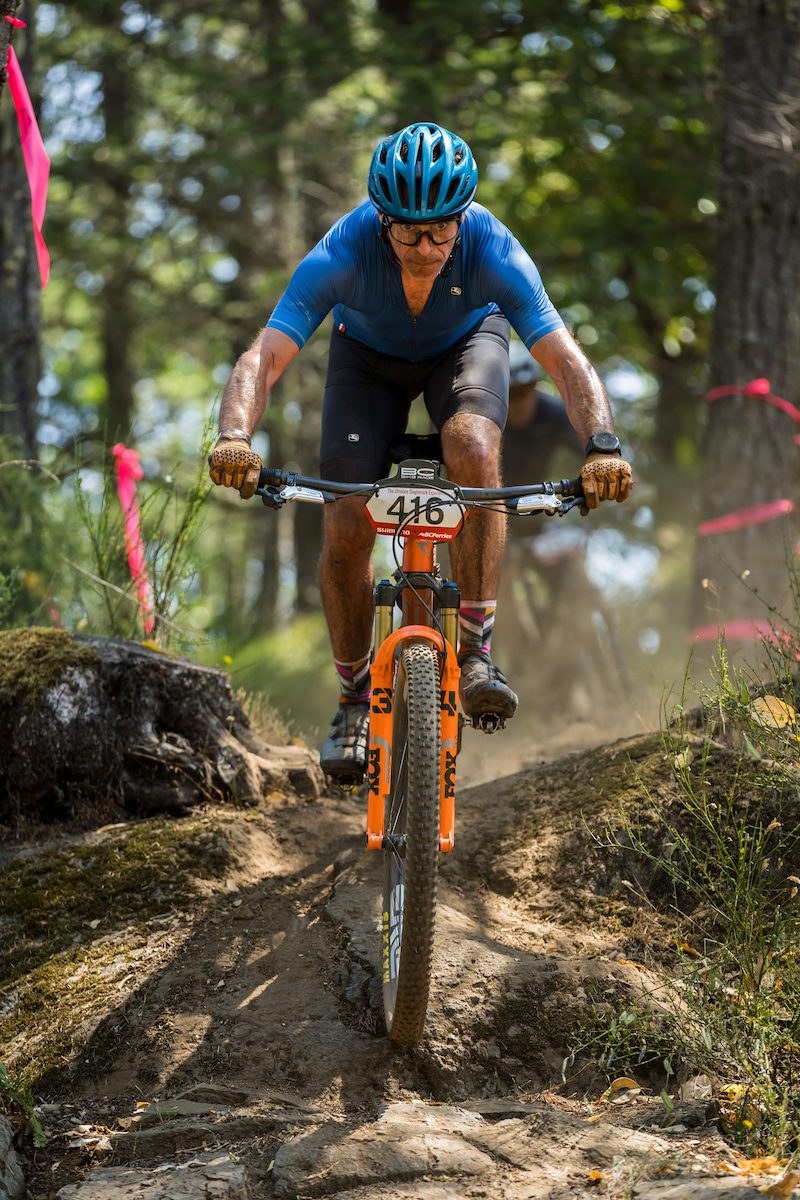
On-trail review: Revel Ranger V2
How did the second-generation Ranger perform? I found the climbing was very strong. As advertised, it kept momentum up over larger features and the bike maintained traction in surprising situations. The frame is a little heavier than many pure XC bikes, in part due to the CBF suspension, making it a little less quick to accelerate at attack climbs. Generally, I was riding conservatively on switchbacks by staying smooth on the outside line.
Descending was another story entirely. The Ranger was, frankly, better than other XC bikes I have ridden. The bike tracked beautifully through washboard descents and into corners over big square rocks and down gullies. The breaking seldom locked up, which resulted in better traction and more control. Where a pure XC bike would feel so much more of the terrain, and translate that up through the pedals and bars, the Ranger did a fantastic job of absorbing it.
While the Ranger isn’t the lightest, its pedalling performance is one of the highlights. It was seldom that I could feel the suspension moving while pedalling. That meant that at most times I felt like my energy was going into propelling the bike forward.
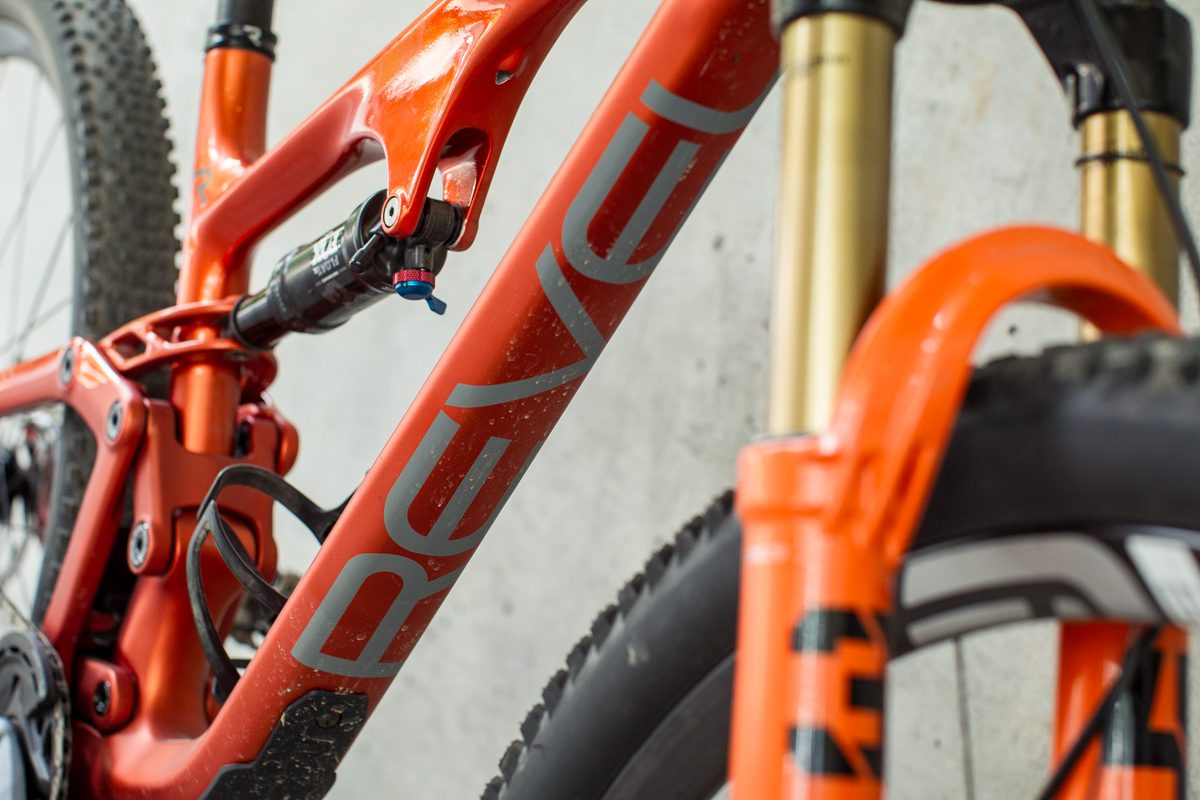
The Verdict
The Revel Ranger v2 is a terrific bike. It climbs well, but it is not your xc race machine. It descends much more like trail bike despite the smallish front fork and shock. So really if you’re riding is primarily about fun, with occasional racing, this is a great option.
I tested this bike for a week at the BC Bike Race, with its many technical descents and longish climbing trails and fire roads. Revel has created a bike that is almost the perfect bike for this setting. The Ranger performed so well on the many technical descents, giving me increased confidence as the week progressed. It held its own on the dusty blown-out corners, through the rock rolls, and short technical climbs, and was seldom on the flat foot. It pedaled well even on the steep fire road climbs that I would occasionally question if I had turned the shock and fork too rigid as the suspension often went unnoticed.
My frame had mounts for two water bottles, but on the medium frame the topmost spot is too small to carry a full water bottle. Instead, I used the Wolf Tooth B-Rad system and Teklite roll-top bag for carrying tools and glasses. On the large frame both spots work for water bottles.
